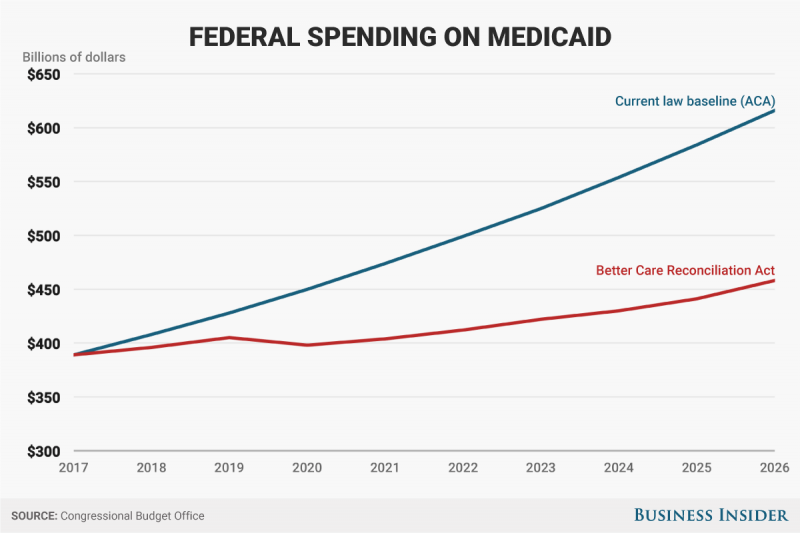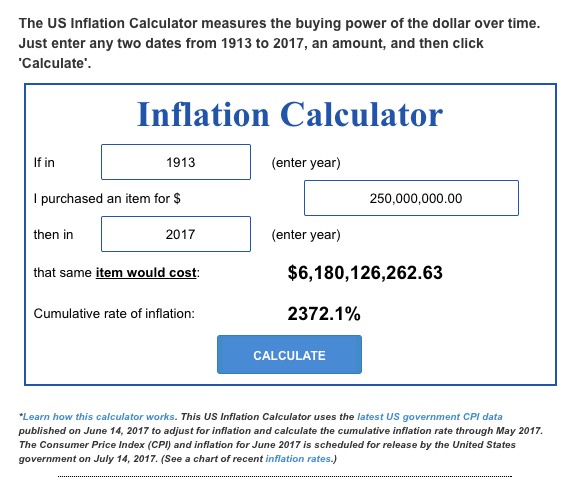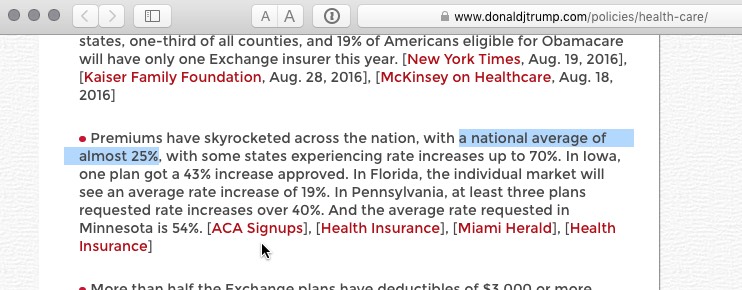Brit Hume Logic: We should be happy with a $6.2 billion military budget!

So, the other day the CBO issued their score of impact of the GOP Senate's #BCRAP bill on both healthcare enrollment as well as the U.S. Federal Budget. While most people have been focusing on the impact on how many additional people are projected to be uninsured as of 2026 if the bill becomes law, there's also been a lot of understandable backlash over the massive cuts to non-ACA Medicaid spending: A reduction in projected spending of 26% as of 2026 and 35% by 2036:
The Senate Republican healthcare plan's proposed cuts to Medicaid, one of the most contentious parts of the bill, get progressively steeper over time, according to a Congressional Budget Office analysis released Thursday.
The nonpartisan CBO on Monday released its first analysis for the Senate bill, the Better Care Reconciliation Act, and estimated that provisions in the BCRA would result in $772 billion in cuts to Medicaid by 2026.
That amounts to 26% less funding for the program than than under the current law, the Affordable Care Act.
The CBO report released on Thursday took the projection a step further, finding that by 2036 the funding decrease would be grow to a 35% decline.
In response, the GOP has tried a full court press on the definition of the word "cut":
Meanwhile, Republicans argue that the bill doesn't make cuts to Medicaid because funding to the program still rises over time. President Donald Trump tweeted out a misleading chart about Medicaid spending to defend the plan on Wednesday, as did Health and Human Services Secretary Tom Price.
As this accurate chart from Business Insider shows how Medicaid spending is projected to look through 2026 under currentl law vs. under the BCRA:

From the CBO's 2036 extended projection analysis:
The per capita caps under this legislation would constrain Medicaid spending in stages. Beginning in fiscal year 2020, the federal government would limit the amount of reimbursement it provides to states. That limit would be set for a state by calculating the average per-enrollee cost of medical services for most enrollees who received full Medicaid benefits over eight consecutive quarters of the state’s choosing between the first quarter of federal fiscal year 2014 and the third quarter of 2017. Those enrollees would be in five specified categories: the elderly, disabled adults, nondisabled children, adults made eligible for Medicaid by the ACA, and all other adults. The Secretary of Health and Human Services would then inflate the average per-enrollee costs for each state as described—for most nondisabled children and nondisabled adults enrolled in Medicaid using the CPI-M and for most enrollees who are disabled adults or age 65 or older using the CPI-M plus 1 percentage point. Disabled children would be excluded from the per capita caps and covered as under current law. Beginning in 2025, the Secretary would shift the inflation factor for all groups to the CPI-U. The final limit on federal reimbursement for each state starting in 2020 would be the average cost per enrollee for the five specified groups of enrollees, reflecting growth from the base period in the relevant inflation factors multiplied by the number of enrollees in each category. The amount of spending subject to those limits would be a large share of total spending.
It also includes this graphic showing the impact in 2026 and 2036:

What's this have to do with Brit Hume? Well...
Extremely misleading graphic. You'd never know it is not discussing actual cuts, but reductions in the rate of increase. https://t.co/qGSdm0AuV4
— Brit Hume (@brithume) June 30, 2017
According to Mr. Hume, a "reduction in the rate of increase" should never be considered a "cut". He also seems to think that spending on healthcare should never exceed the average national inflation rate, regardless of things like population growth, medical costs, technological advances and so forth.
So, let's take this "a cut isn't really a cut" reasoning to its logical extreme and apply it to other sectors of the economy.
In 1913, according to a U.S. Government Spending website, the total U.S. Federal Defense Budget was around $250 million.
According to this Inflation Calculator tool, $250 million in 1913 dollars would be equivilant to around $6.2 billion today using U.S. Gov't. CPI data.

By Brit Hume's logic, if the U.S. defense budget was only $6.2 billion today, we should all still consider it to have "increased" since 1913.
Now, technically I suppose that's true...but I guarantee you that if the 2018 defense budget was slashed from the currently proposed $639.1 billion down to, say, $6.3 billion, Mr. Hume probably wouldn't be too happy about that.
I'm also pretty sure that World War II, Korea, Vietnam, Afghanistan and Iraq would have played out a wee bit differently if our defense budget in those years had been limited to the non-military rate of inflation.
This didn't make Mr. Hume very happy.
Will you release me from the tweetstorm you are having with yourself? My point stands. It's based on the common meaning of the word "cut."
— Brit Hume (@brithume) June 30, 2017
According to Webster's, the definition of a "budget cut" is:
Noun1.budget cut - the act of reducing budgeted expenditures
Well, when you're comparing the budget scheduled for 2026 under BCRAP vs. the budget scheduled for 2026 under existing law, yes, "budgeted expenditures" for Medicaid would indeed be reduced, by around $160 billion for that year alone.
Of course, as my friend Ken Kelly just noted, Mr. Hume didn't seem to have a problem referring to reductions in future budget growth as "cuts" back in 2012...
My recollection is that you described the Medicare provider payment cuts in the ACA as "cuts" like everybody else. https://t.co/3g2cBbJhOV
— Ken Kelly (@_KJKelly) June 30, 2017
One way or another, Barack Obama, Paul Ryan and Mitt Romney all have supported the $700 billion in cuts to Medicare spending now in place under the Affordable Care Act.
But you wouldn't know that by listening to the current debate.
The Romney-Ryan campaign in its latest TV ad assails Obama for approving the cuts in 2010. "Obama has cut $716 billion dollars from Medicare," says the narrator. "The money you paid for your guaranteed health care…is going to a massive new government program that's not for you."
Voters might be left with the impression that Romney and Ryan have both opposed the cuts. The truth is that Ryan himself endorses them in his signature budget plan - the same plan Romney has said he would sign as president if it reached his desk.
Those Medicare savings -achieved through reduced provider reimbursements and curbed waste, fraud and abuse, not benefit cuts - appear in the House Republicans' FY 2013 budget, which Ryan authored.
His plan would in part repeal the entirety of the Affordable Care Act - except the reductions in Medicare spending now at the center of debate, according to analysts with the nonpartisan Kaiser Family Foundation.
Where Romney and Ryan find shelter for their new line of attack is in what they claim they'd do with the savings. As the ad suggests, they don't want the money to underwrite Obamacare, but for deficit reduction or other spending instead.
"We're the ones who are not raiding Medicare to pay for Obamacare," Ryan said tonight in his first solo interview with Fox News Channel's Brit Hume.
Also, for the record, Mr. Hume, seeing how your own candidate of choice, Donald Trump, cited my work on his official campaign website last fall...

...and seeing how Trump's own HHS Dept. Communications Spokesperson misleadingly quoted me in a misleading press release last month...
...I'd say that plenty of other people are paying attention to my tweetstorms.



